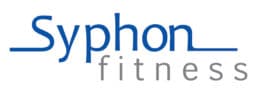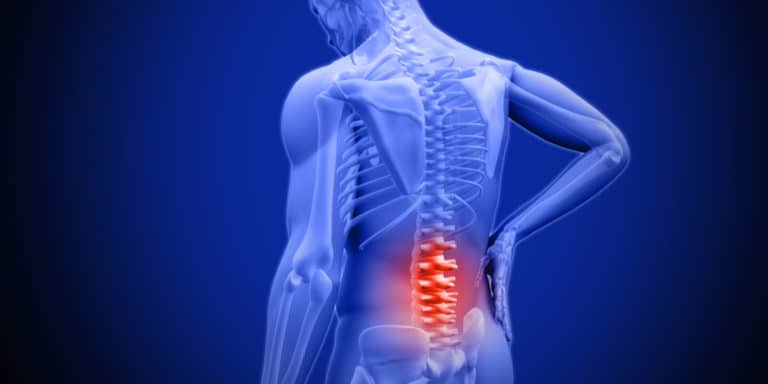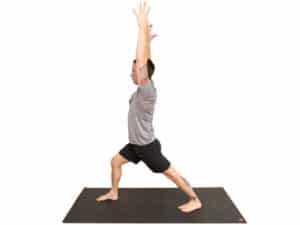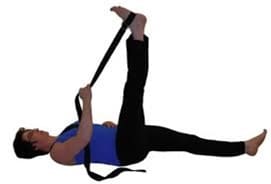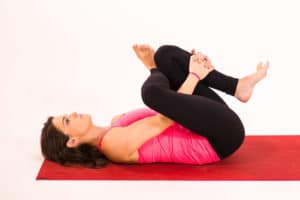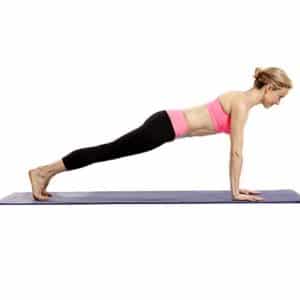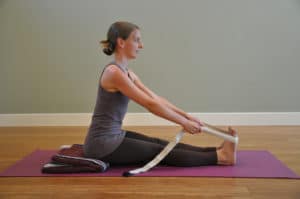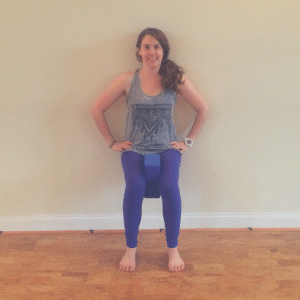Written By Michael Kuang CPT, CES, CPRS, C-IAYT
Low back pain is one of the most common issues which people visit their doctors for and according to the Global Burden of Disease in 2010 it is the leading cause for disability worldwide. It’s so common, that it’s estimated 80% of the population will experience lower back pain at some point in their lifetime. Muscle Strain or Ligament Sprain can cause issues of the lower back. A strain is when the muscle is overstretched and tears, while a sprain is when the ligaments become over-stretched. These can occur when a person lifts a heavy object, twists while lifting, a sudden movement perhaps a fall or when playing sports, and poor posture over time. Strains and sprains may only hurt for a few days, then the pain should subside. Common red flags indicating severe trauma to the low back would be incontinence of either the bladder or bowel system. This would require immediate medical attention. Some other common causes for low back pain are herniated discs, degenerative disc disease, stenosis, spondylolisthesis, and deformities like scoliosis. These would fall under the chronic low back pain category as the pain would last 3 months or more.
Why Yoga Therapy For Low Back Pain?
Using Yoga Therapy with general low back pain is very effective. Specific poses are done to relieve areas around the lower back that can cause low back pain. An assessment is done to distinguish what areas of the body is imbalanced. Then you can put together a proper protocol that includes flexibility, range of motion, and strength on the areas needed.
The Hips
Working with the hips will most likely be the target of flexibility. In this day and age most people are sedentary, and the hips tighten as a result. Having tight hips affects the spine depending on how the muscles of the hips pull the spine. For instance, if you notice the lumbar spine going into over extension or hyper-lorodosis. The hips will most likely be in an anterior tilt due to tight hip flexor muscles. The psoas muscle being the main contributor of pulling the hip forward and down. The psoas is connected to the spine starting from T12 and L1 thru L5 on both sides of the spine, it passes thru the pelvic region and inserts into the top of the femur. When it is tight, the muscle pulls the spine anteriorly causing the hyper-lordosis and anterior tilt of the pelvis. To stretch the muscle, the femur must be in extension and the spine must be neutral. Yoga poses such as Anjaneyasana and Virabadrasana 1 can help with the flexibility of the front of the hip.
The Spine
When the lumbar becomes too rounded, it is called hypo-lorodosis or flat back. This is when the lumbar curve loses its shape and starts to move posteriorly. When this happens the most likely cause is tight overactive hamstrings. The hamstrings originate at the ischial tuberosity, which is the sit bones of the pelvis area. The tight hamstrings pull the hips downward into a posterior tilt and over time the spine starts to move in to the flattened position. This decreases the mobility of the spine as well as weakens the spinal column. Hamstring stretches will be important in this case. The femur will need to be in a flexed position at the hip with the spine in a neutral position. Yoga poses such as Supta Padangusthasana can help to open up the back of the legs. Gentle restorative backbends can also help to create some space in the lumbar to help the spine find its lordotic curve.
External Rotators
Tension in the external rotator muscles of the hip can cause issues on the spine as well. When the Piriformis muscle (main external rotator) is tight. The hip gets pulled into external rotation, which can push the pelvis forward and compresses the sacroiliac joint and shortens the lumbar spine. Tension can also cause symptoms similar to sciatic pain, since the piriformis muscle runs over the sciatic nerve. When the piriformis is tight it can put pressure on the sciatic nerve causing tingling and numbness down the legs. This condition is called “piriformis syndrome”. Stretching of the piriformis muscle will be important to alleviate issues of the low back and sciatic nerve. Yoga poses like Supine Modified Pigeon, is a great way to stretch the muscle without having to strain the rest of the body.
Abductors
In addition to tight external rotators, the hip abductor muscles are generally overworked and tight. This prevents the hips from going into internal rotation comfortably, which can cause similar effects of the spine as to having tight external rotators. Having full range of motion in the hips allows the spine to stay in a comfortable position. Yoga Poses such as Parivrtta Supta Padangusthasana can help to open up and release tension in Glut Medius, TFL, and IT Band as well as the external rotators.
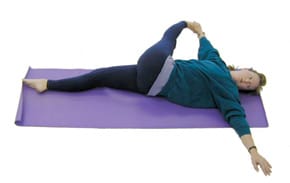
Strengthening
After releasing tension in the areas needed, strengthening the hips is important to help balance the body. The muscles that usually need strength is the adductors and internal rotators. The exact opposite muscles of the ones we worked to stretch and lengthen. These muscles will help to bring the femur into a neutral position and allows for movement in the hips. Once the movement is available in the hips, the spine will start to regain its mobility and strength.
To support the spine, the abdominals need to be strengthened as well to help keep the spine from losing its integrity. The abdominals help to keep the spine supported so that it does not go into too much flexion, extension, as well as twists in quick and sudden movements. Learning to engage the abdominals will allow for the body to protect the spine. Yoga poses that help to work the hips and abdominals are Plank, Dandasana with a strap, Tadasana with a block between the legs, and wall squat with block between the legs. These all help to strengthen the inner thighs and brings awareness to the abdominals.
Keep Doing It For Low Back Pain Relief!
The work done should be consistent, as the body will respond better to frequency and repetition. Yoga has been researched to help overcome back pain. Yoga helps to bring awareness to the body and address what is imbalanced. The breath work is also what sets Yoga apart from any other modality. Breathing is essential to allowing the body to heal, as it helps to trigger the Parasympathetic Nervous System. It is only in this state that the body is able to truly heal.

